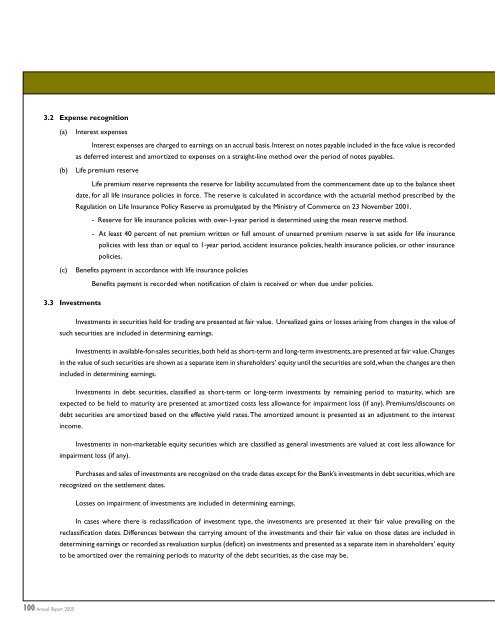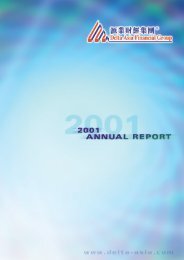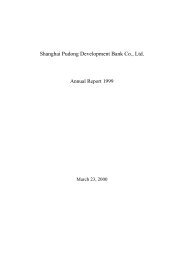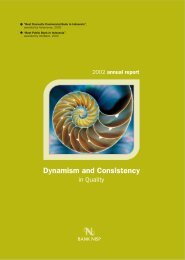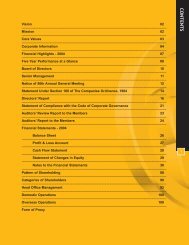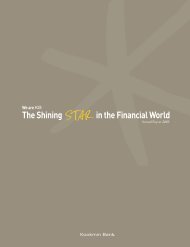2005 - Asianbanks.net
2005 - Asianbanks.net
2005 - Asianbanks.net
Create successful ePaper yourself
Turn your PDF publications into a flip-book with our unique Google optimized e-Paper software.
3.2 Expense recognition<br />
(a)<br />
(b)<br />
(c)<br />
Interest expenses<br />
Interest expenses are charged to earnings on an accrual basis. Interest on notes payable included in the face value is recorded<br />
as deferred interest and amortized to expenses on a straight-line method over the period of notes payables.<br />
Life premium reserve<br />
Life premium reserve represents the reserve for liability accumulated from the commencement date up to the balance sheet<br />
date, for all life insurance policies in force. The reserve is calculated in accordance with the actuarial method prescribed by the<br />
Regulation on Life Insurance Policy Reserve as promulgated by the Ministry of Commerce on 23 November 2001.<br />
- Reserve for life insurance policies with over-1-year period is determined using the mean reserve method.<br />
- At least 40 percent of <strong>net</strong> premium written or full amount of unearned premium reserve is set aside for life insurance<br />
policies with less than or equal to 1-year period, accident insurance policies, health insurance policies, or other insurance<br />
policies.<br />
Benefits payment in accordance with life insurance policies<br />
Benefits payment is recorded when notification of claim is received or when due under policies.<br />
3.3 Investments<br />
Investments in securities held for trading are presented at fair value. Unrealized gains or losses arising from changes in the value of<br />
such securities are included in determining earnings.<br />
Investments in available-for-sales securities, both held as short-term and long-term investments, are presented at fair value. Changes<br />
in the value of such securities are shown as a separate item in shareholders’ equity until the securities are sold, when the changes are then<br />
included in determining earnings.<br />
Investments in debt securities, classified as short-term or long-term investments by remaining period to maturity, which are<br />
expected to be held to maturity are presented at amortized costs less allowance for impairment loss (if any). Premiums/discounts on<br />
debt securities are amortized based on the effective yield rates. The amortized amount is presented as an adjustment to the interest<br />
income.<br />
Investments in non-marketable equity securities which are classified as general investments are valued at cost less allowance for<br />
impairment loss (if any).<br />
Purchases and sales of investments are recognized on the trade dates except for the Bank’s investments in debt securities, which are<br />
recognized on the settlement dates.<br />
Losses on impairment of investments are included in determining earnings.<br />
In cases where there is reclassification of investment type, the investments are presented at their fair value prevailing on the<br />
reclassification dates. Differences between the carrying amount of the investments and their fair value on those dates are included in<br />
determining earnings or recorded as revaluation surplus (deficit) on investments and presented as a separate item in shareholders’ equity<br />
to be amortized over the remaining periods to maturity of the debt securities, as the case may be.<br />
100


